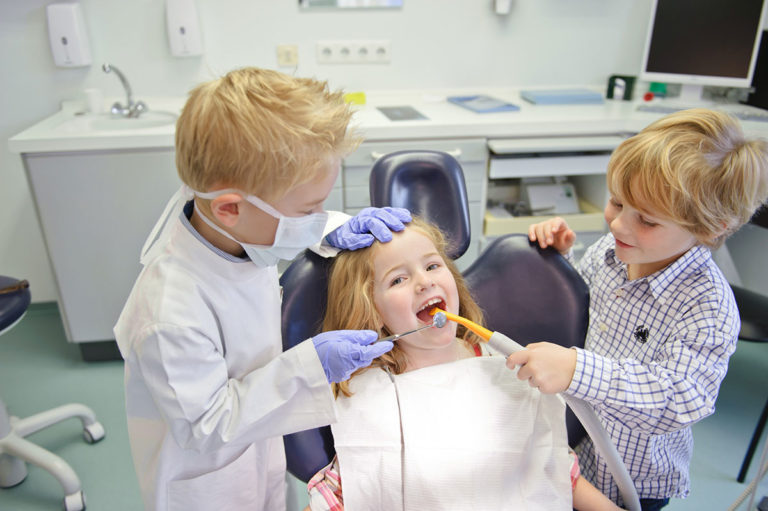Right along with sweet Valentine’s Day treats, February is National Children’s Dental Health Month! As your pediatricians, we worry about all of the aspects of your children’s health. Dental cavities are one of the top chronic diseases of childhood, making this an important topic to cover at well checks. Like so many parts of health, there are many things that we can do as parents to establish healthy habits and prevent problems before they start.
Many families wonder if fussiness is related to teething. While babies as early as 4 months can start to get teeth, this is also a time when it is normal developmentally for infants to want to put things in their mouth and drool more. While it is typical for the first tooth to erupt by 7 months some infants can be 15 months before the first tooth erupts. Studies have shown that infants who are teething may have a slight fever (up to 100.4), slightly loose stool, or a slight runny nose. Anything more than these mild symptoms is likely not due to teething alone. If your baby is suffering from tooth pain, rubbing the gums or offering a cool teething toy can be helpful. My girls always liked a clean wet washcloth from the fridge the best. Teething gels should not be used because they are dangerous. Instead, stick with acetaminophen (or ibuprofen for infants over 6 months), which will last much longer anyway.
Dental caries, start when bacteria becomes colonized in your baby’s mouth. This bacteria can then interact with the sugars in food and beverages to create acid which breaks down the protective enamel covering on the surface of the teeth. Even before your baby has teeth, you can delay spreading bacteria from your own mouth by not sharing utensils and by washing pacifiers with soap and water instead of putting them in your own mouth. Reduce sugar exposure to the teeth by not offering anything other than breast milk, formula, or water in a bottle, and never prop a bottle for your baby to drink from while falling asleep.
You may have noticed that the first set of teeth in childhood is more translucent or even bluish. That is because they have a thinner coat of enamel protecting them. They also have deeper grooves on the molars, which makes it all the more important to keep them clean from the start. Start good oral care habits by wiping down your infant’s gums with a soft cloth from the beginning. As teeth start to erupt, you can use a tiny bit of fluoride toothpaste the size of a grain of rice to clean the teeth with a soft brush twice a day. Children over 3 can move to a pea-sized amount of toothpaste. Many toddlers resist brushing at one time or another. I find that maintaining the routine, trying to make a game out of it, and using a kid’s electric toothbrush can help.
Fluoride is found naturally in the environment, is safe, and can prevent tooth decay. It is added to municipal water as a public health measure and is helpful to use for drinking and cooking. If your family has well water or uses bottled water, we will talk to you about supplemental fluoride once your child is over 6 months. In addition to brushing, topical fluoride varnish can be applied to your child’s teeth every 3-6 months to prevent and even reverse some early tooth decay. We offer this simple preventative health measure at Pediatric Associates of Charlottesville. Ours has a bubblegum flavor, and I found that my youngest daughter was so busy tasting the varnish that she didn’t notice getting a shot afterward!
As your child gets older and permanent teeth start to erupt, continue to practice healthy habits. Preventing dental caries is one of many reasons to avoid sodas and sweetened drinks, and is a goal that I have for all of my patients! The pressure is really on to protect these teeth lifelong, and sticky candies and added sugars are a set up for problems. So as we head into Valentine’s Day, consider a beautiful bowl of red berries for your treat or at least brush your teeth afterward!

